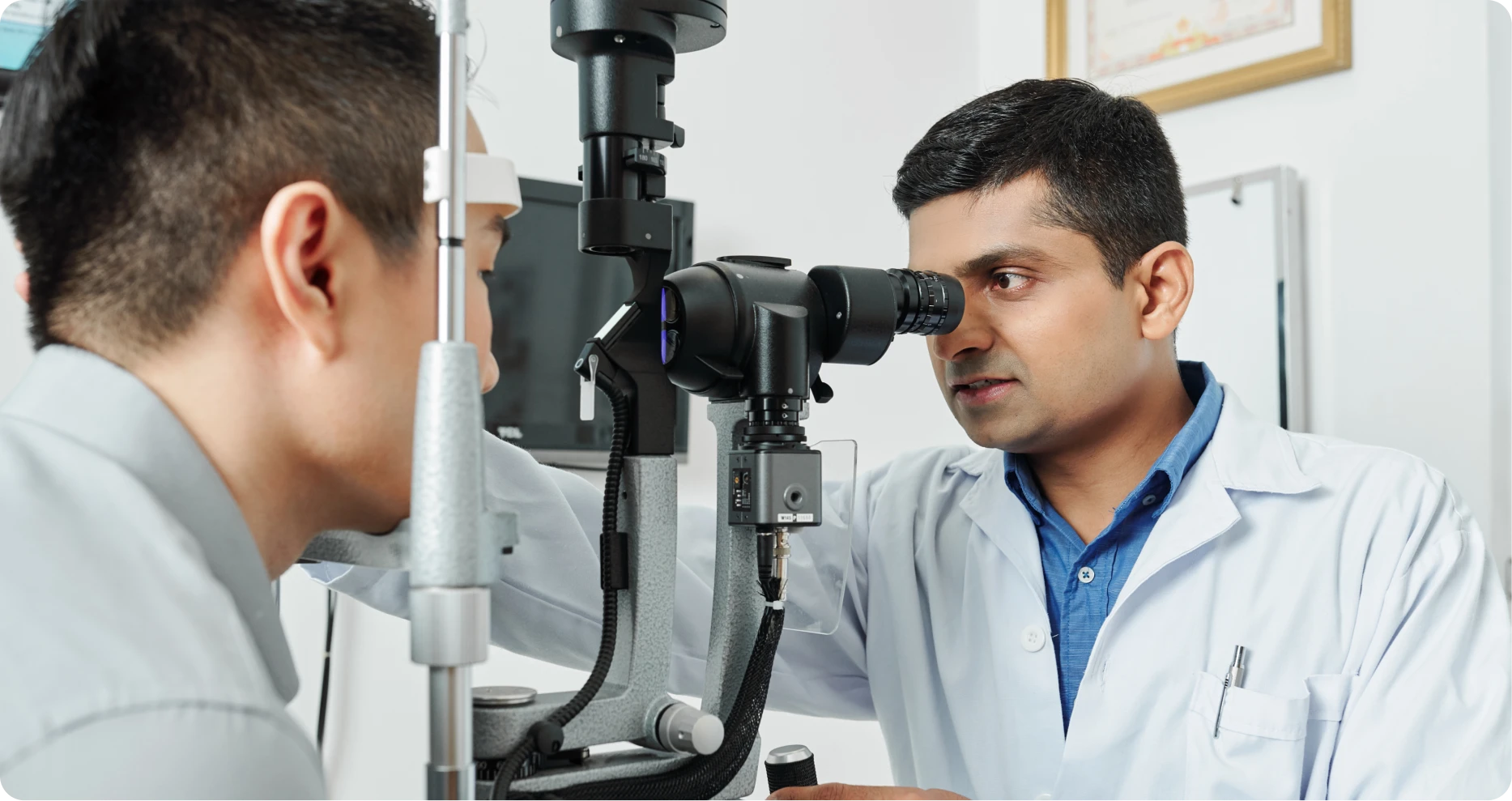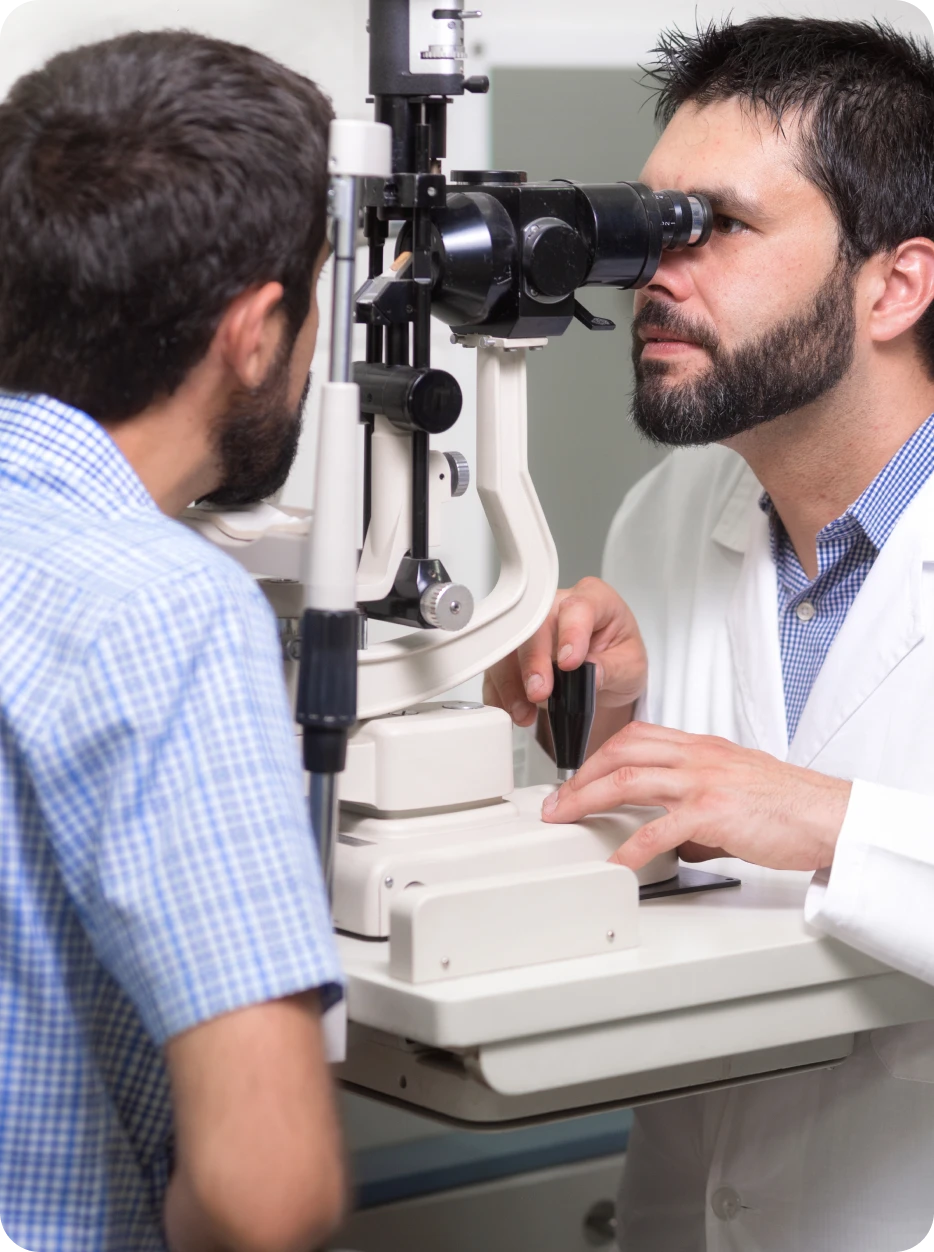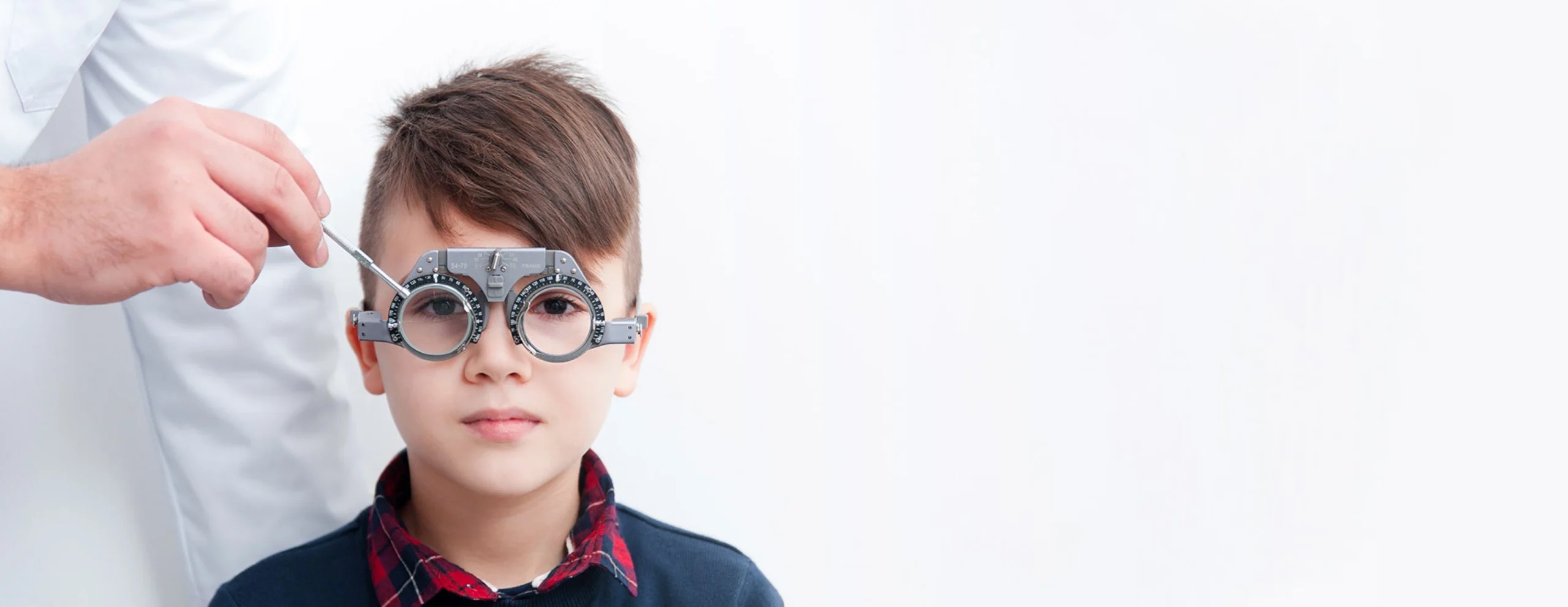Comprehensive Eye Exam in Katy, TX
See clearly, stay healthy. At Vision Gallery in Katy, our eye doctors and eye specialists provide full comprehensive eye exams to assess vision, eye health, and contact lens suitability. Trust us for precision, comfort, and clarity—schedule your exam today.
Categories
- Monday: 9:00 AM - 5:00 PM
- Tuesday: 10:00 AM - 6:00 PM
- Wednesday: 9:00 AM - 5:00 PM
- Thursday: 9:00 AM - 5:00 PM
- Friday: 9:00 AM - 5:00 PM
- Saturday: Closed
- Sunday: Closed
What Is a Comprehensive Eye Exam?
A comprehensive eye exam is much more than a glasses prescription. During the exam, our team evaluates:
- Your visual acuity (near, distance, and intermediate)
- Eye muscle function and alignment
- Depth perception, color vision, and peripheral vision
- Eye health through slit-lamp exam, retinal imaging, and glaucoma screening
- Contact lens fitting, if needed
- Feeling of something “gritty” in the eye
This complete evaluation helps detect eye diseases early and ensures your vision and eye health are optimized.

What to Expect During Your Exam
Your comprehensive eye exam at Vision Gallery will typically include:
1. Visual acuity tests (reading charts at different distances)
2. Eye muscle and alignment checks
3. Slit-lamp exam to inspect the front of the eye
4. Retinal imaging or dilation to view the retina and optic nerve
5. Tonometry to measure intraocular pressure (glaucoma check)
6.Contact lens evaluation, if you want to wear lenses
You’ll leave knowing your vision is clear and your eyes are healthy—or with a plan if anything needs attention.

Signs You Need a Comprehensive Eye Exam
You should consider an exam if you experience:
- Blurry or changing vision
- Frequent headaches or eye strain
- Difficulty seeing at night or with glare
- Dryness, irritation, or red eyes
- You wear or want to wear contact lenses
- You haven’t had an eye exam in over a year
A comprehensive eye exam in Katy helps catch vision changes and eye diseases early—before they become serious.
Comprehensive Exam + Contact Lens Option
At Vision Gallery, you can combine your comprehensive exam with a contact lens exam, which includes:
1. Corneal curvature and shape measurement
2. Tear film assessment
3. Trial lens fitting and comfort checks
4. Prescription for contact lenses, if suitable
5. Environmental conditions (wind, smoke, dry air)
This full package makes it easy to get both your vision corrected and lenses fitted in one visit.
Why Regular Exams Are Critical
Even if your vision seems fine, many eye diseases are silent in early stages. Regular comprehensive eye exams help:
1. Detect glaucoma, cataracts, macular degeneration, diabetic changes
2. Monitor changes in your eye health over time
3. Update prescriptions for glasses or contacts when needed
4. Prevent long-term damage and maintain clear vision

Why Choose Vision Gallery’s Comprehensive Eye Exam?
Patients choose Vision Gallery in Katy, TX, for expert, personalized dry eye care because we provide:
Experienced eye doctor in Katy and eye specialists in Katy
Advanced digital imaging to catch early signs of diseases
An optional contact lens exam is included within the comprehensive exam
Personalized consultation and education about your eye health
Convenient location and friendly patient care
Why Choose Us
Contact Us
Book Your Comprehensive Eye Exam in Katy Today
Don’t wait for vision problems to worsen. Schedule your comprehensive eye exam in Katy, TX at Vision Gallery now. Our eye doctors will give you the best exam, health check, and recommendations.
Testimonials
What Our Client Say
About Vision Gallery
Trustindex verifies that the original source of the review is Google. I suffered so much from dry eye in the mornings that I felt like I woke up in the Sahara. I tried drops that would only work for a little while and was super inconvenient. Dr Ma recommended the OptiLight and OptiLift system for the problem. I have been doing these treatments for at least two months. My results have been amazing so far. My eyelids have lifted my face looks refreshed and I have very little to no symptoms of dry eye! These procedure has very few rules after and the results are life changing to me. It’s worth all the time and money.Trustindex verifies that the original source of the review is Google. Vision Gallery is fantastic! Everyone is very helpful and the dry eye treatments have been very beneficial for my dry eyes.Trustindex verifies that the original source of the review is Google. I have been a patient here for a long time. I have very severe issues with dry eye and undergone treatment. Dr. Mahmoodpour (Dr. Mah) and her team have been amazing. The office is clean, efficient, and the medical care is the best I’ve ever seen in the industry. Their small like environment, the vast majority of insurance they accept, and the attention to customer service and quality experience is wonderful. I cannot recommend them enough!Trustindex verifies that the original source of the review is Google. Dr Ma is the best optometrist that I have ever seen and I have seen many. She is compassionate and caring always thorough. She goes above and beyond and has showed our family that she is on top of anything she sees that is out of the ordinary during an exam. Her office staff is very kind and helpful as well. Don’t waste your time looking for an optometrist. Take it from me; go see Dr Ma ,she is the best!!Trustindex verifies that the original source of the review is Google. The level of care and communication is great. Went in for dry eyes and pain and the doctor took every step to determine the problem.Trustindex verifies that the original source of the review is Google. Christine is wonderful!! Business as a whole very professional and you can tell they value your time.Trustindex verifies that the original source of the review is Google. Christine was so helpful customer service was 10 out of 10!Trustindex verifies that the original source of the review is Google. I’ve been coming to Dr Ma about 2 years now. She is the sweetest, most thorough eye dr I have ever been to. She takes the time needed to explain and make sure I understand everything pertaining to my plan of treatment. All of the other eye doctors I had been to gave me the test, gave me my prescription, sold me the glasses and I was out the door. After coming to Dr. Ma. I realized I had never actually had a proper eye exam. My eyes were feeling tired and strained. She did my exam and I indeed needed a new script. I was also tested for dry eye which she showed me on the screen and explained in great detail what was going on with my eyes and what the plan of treatment was going to be. After being treated for dry eye ( no, it’s not just feeling like you eyes need drops). There is a treatment therapy for this. I literally felt like I had a new pair of eyes. I can’t believe I had never been tested for that. I’ve been wearing glasses over 10 years. The staff is Exceptional. They are patient, kind, always accommodating and knowledgeable. I’m so happy I have found Dr. Ma and her staff. I will never go to another eye doctor! I walked out of there, feeling so confident that all my issues had been addressed. My eyes felt better. I love the glasses that I got and they were very patient in helping me make sure I had the right fit and everything was as it should be. If there’s anything I need or I have a question they are always available, ready to answer and assist. They definitely care about their patients and always go above and beyond to help anyway they can. I am definitely impressed and will not go anywhere else!Verified by TrustindexTrustindex verified badge is the Universal Symbol of Trust. Only the greatest companies can get the verified badge who has a review score above 4.5, based on customer reviews over the past 12 months. Read more